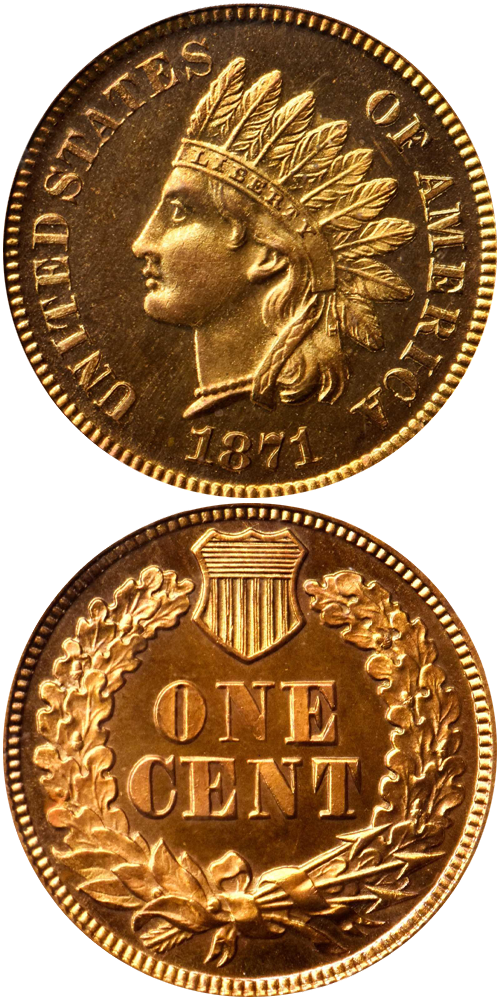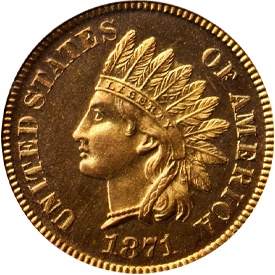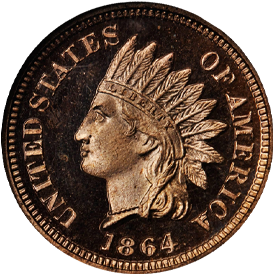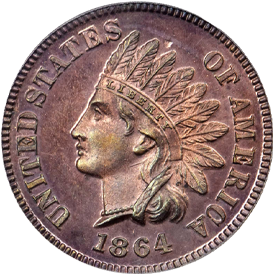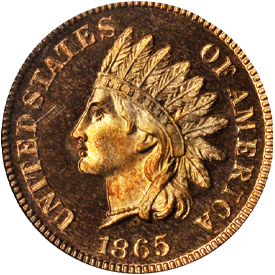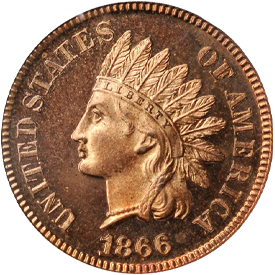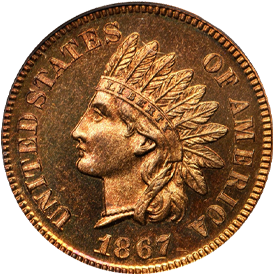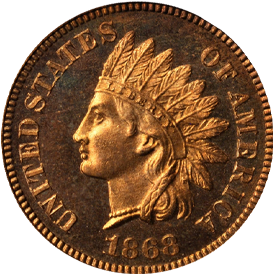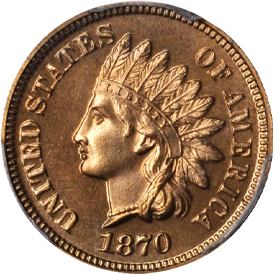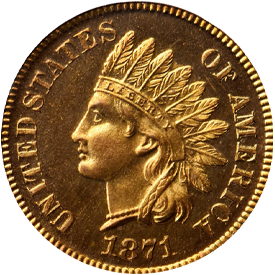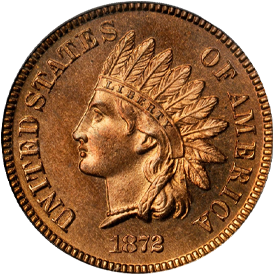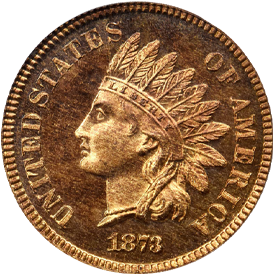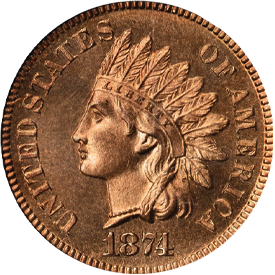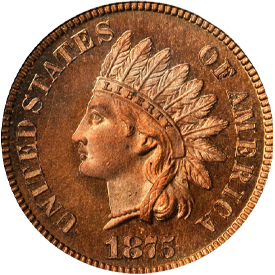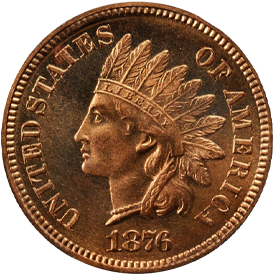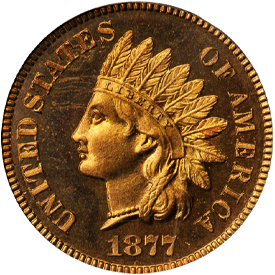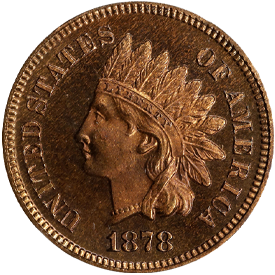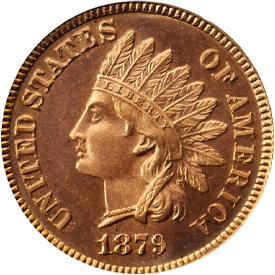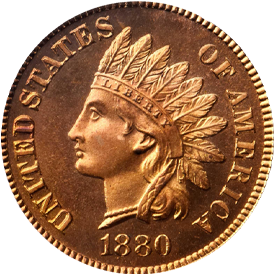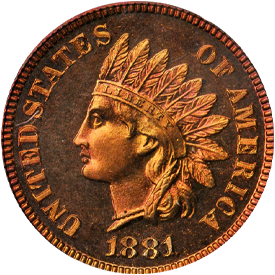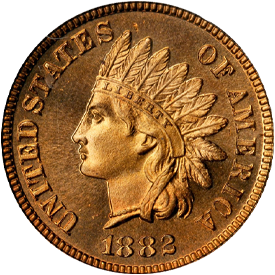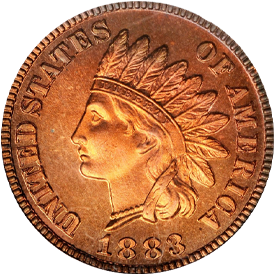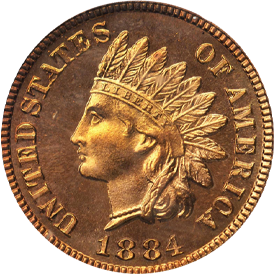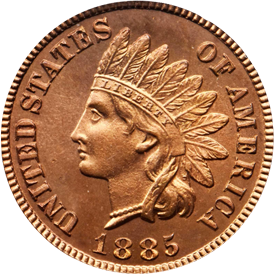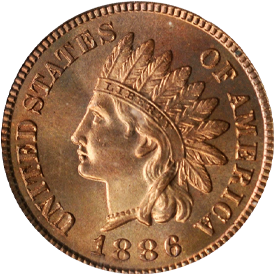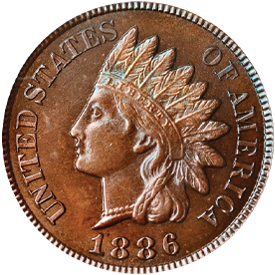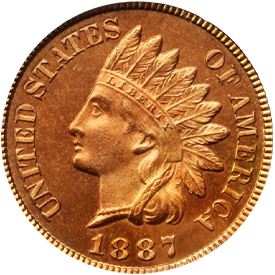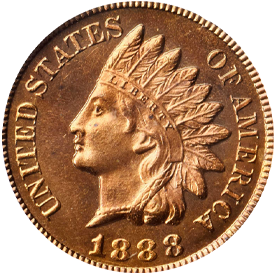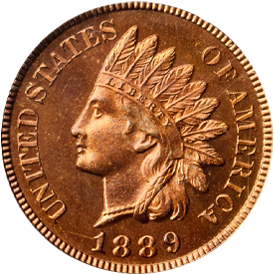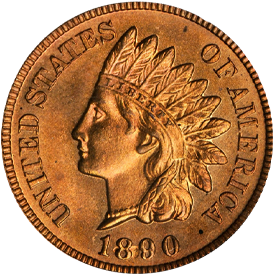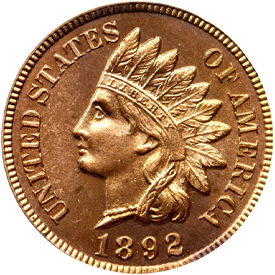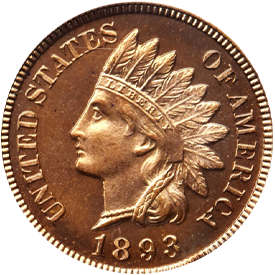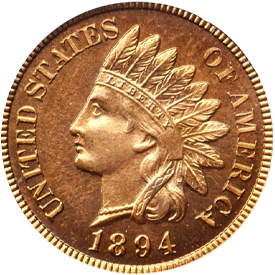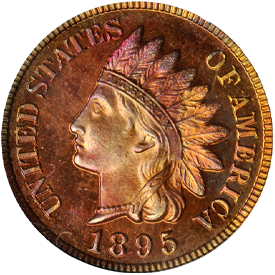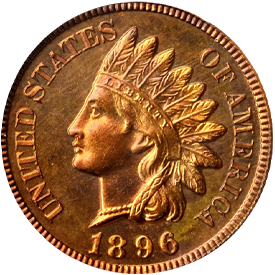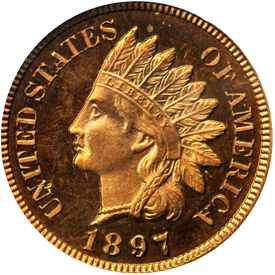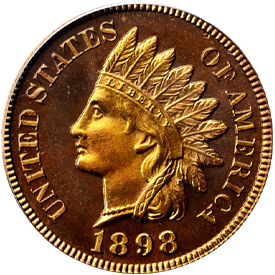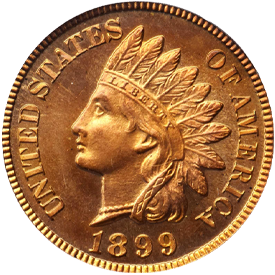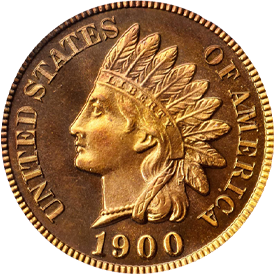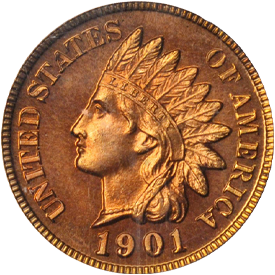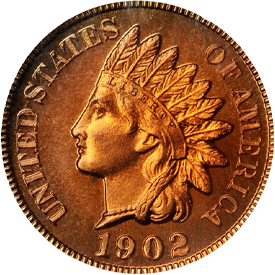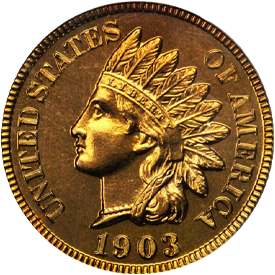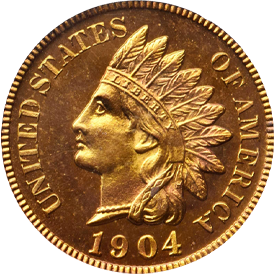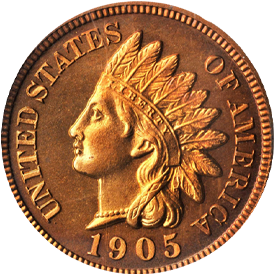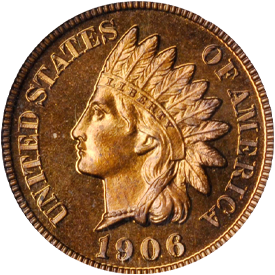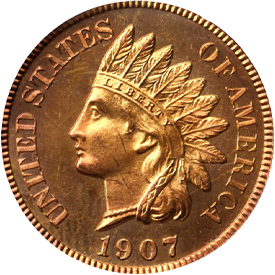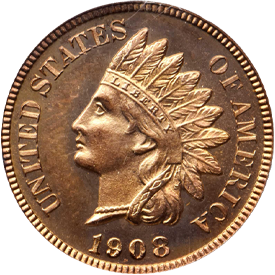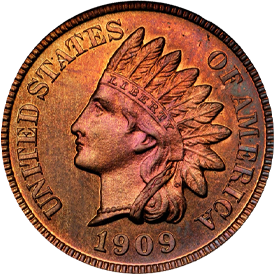Designed by: James Barton Longacre
Issue Dates: 1864-1909
Composition: 95% copper, 5% tin and zinc
Diameter: 19 mm
Weight: 48 grains
Edge: Plain
Proof Mintage: 98,000 (estimated)
Proof coins had been struck by the Philadelphia mint since the early 1820s, but prior to 1858, strikings were occasional, and distribution was confined primarily to those with special connections at the Mint, to influential politicians, foreign dignitaries, and others. Among the more famous of the early Proof coins were the pieces in the set presented to the King of Siam in the mid 1830s (which included an 1804 silver dollar) and the well-known 1856 Flying Eagle cent, of which several thousand were made for members of Congress, and later, for sale to collectors.
Following the Civil war, mintages remained in the pre-war range of 800 to 1,000 pieces but by the early 1870s had slowly climbed to around 1,000-1,500 coins annually. Beginning in 1878, more exact figures are available, and from that point through 1909, mintage ranged from a low of 1,475 in 1907 to a high of 6,609 in 1883, with most falling into the 2,000 to 4,000 range.
The later bronze issues of 1864 to 1909 are segmented primarily by color, with most (60%) falling into the “Red and Brown” category. Around a quarter are “Brown” and the rest (about 15%) have retained their full “Red” color. Cameos are quite scarce, and have been designated on only around 2% of the certified coins. Deep Cameos are rare.
Like the earlier copper-nickel pieces, PR-64 and 65 are the most frequently encountered grades, but PR-63s and PR-66s remain widely available. PR-67’s are 5 to 10 times as tough as 66’s, but enough have been certified to enable anyone who wants one to locate an example without undue difficulty. PR-68s are a different story, and are rare with only around 30 pieces currently shown from both services, a figure that almost certainly includes some duplication and overlap.
While most Proof Indian cents are worth roughly the same, one date stands out: the 1877. This is not due to the mintage (which was average for the period) nor the availability today (its certified population is also average) but simply the demand from collectors for this date, since the circulation-strike had an extremely low mintage for a cent, and is the undisputed key to the series.
